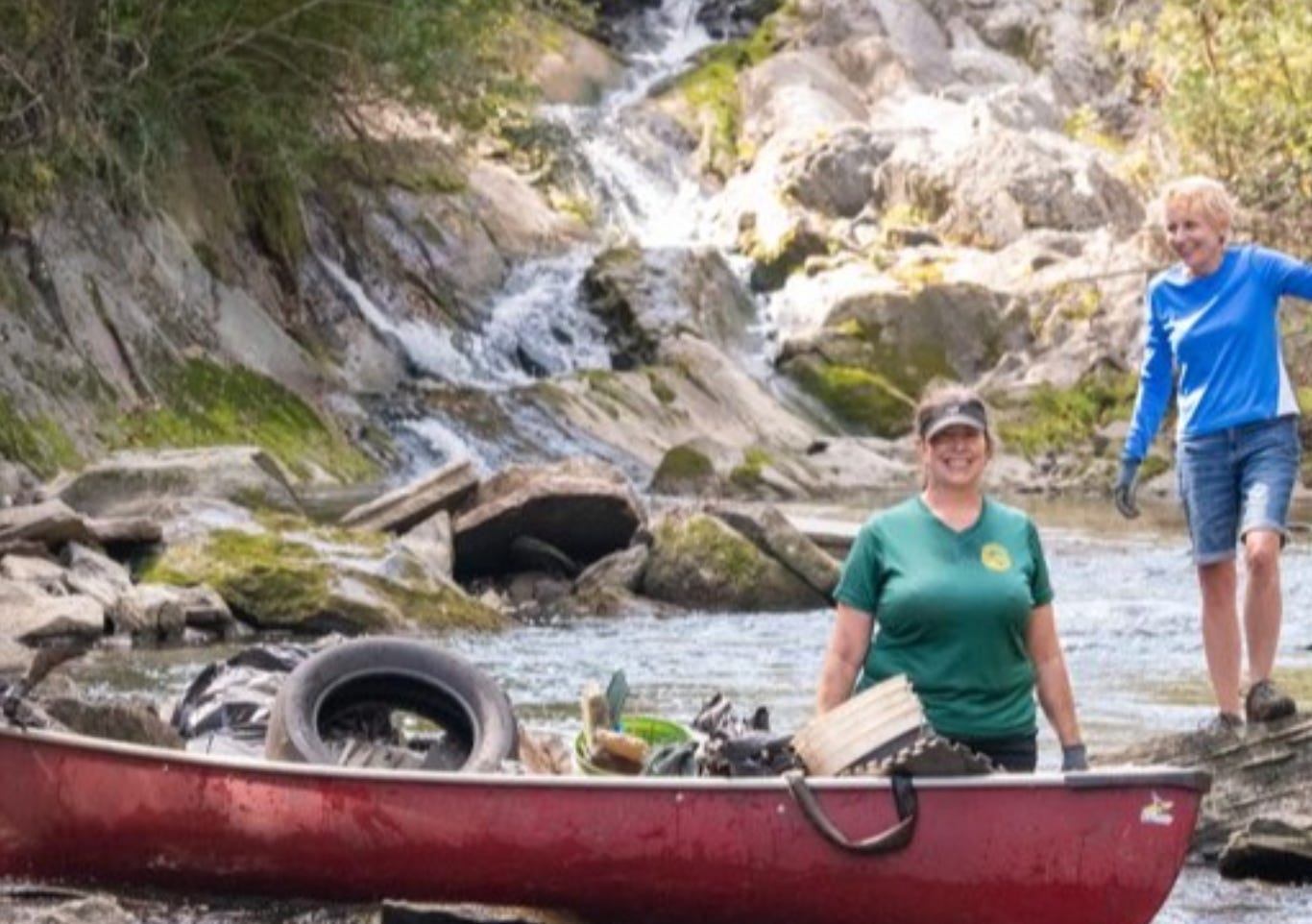You Wouldn't Believe What Gets Pulled from Our Rivers – September Is River Cleanup Month in Vermont
Last year, more than 500 volunteers helped clean up roughly 140 sites statewide, removing more than 20,000 pounds of trash in Vermont rivers.
Shopping carts, tires, bicycles, teddy bears, even the occasional refrigerator. Those are just a few of the stranger items volunteers have pulled from Vermont rivers during cleanup efforts over the years. This September, state officials hope more Vermonters will pitch in to see what else can be found — and removed — as Vermont marks River Clean Up Month.
Governor Phil Scott, Environmental Conservation Commissioner Misty Sinsigalli, and Watersheds United Vermont gathered in Montpelier this week to kick off the month-long initiative. Modeled after Green Up Day, the effort encourages Vermonters to take advantage of low late-summer water levels to pull trash and flood debris from rivers and streams.
“With tourists coming soon to experience our fall foliage, and water levels low, which has exposed debris from the floods of ’23 and ’24, it’s a great time to get out to clean up our rivers and streams,” Scott said. “Much like Green Up Day, if we all pitch in to do our part, our state will be much more beautiful.”
Why September?
Lyn Munno, director of Watersheds United Vermont, explained that rivers are too cold, high, and fragile to safely clean in May during Green Up Day. “In September, our waters tend to be low — this year, very low — and warmer. It is a great time to get out to the rivers and pull the trash out,” she said.
Last year, more than 500 volunteers helped clean up roughly 140 sites statewide, removing more than 20,000 pounds of trash. Items ranged from the predictable — tires, appliances, and old furniture — to the unusual. Friends of the Winooski River’s Taylor Litman recalled finding piles of citrus fruit, dolls, bicycles, and even a full refrigerator. “We do have a prize for the weirdest, grossest item,” she added.
Beyond Aesthetics
Officials stressed that river cleanups are about more than appearance. “Keeping waterways clean is critical to ensuring Vermonters have access to safe water, whether it’s for swimming, paddling, or drinking,” Scott said.
Commissioner Sinsigalli noted that Vermont has more than 20,000 miles of rivers and streams. “They are not merely scenic backdrops. They’re the arteries that connect our communities, sustain our wildlife, and provide significant recreational opportunities,” she said.
She likened her new role to her first canoe trip with her children — a little uncertain, but with a deep responsibility to ensure the journey goes well. “September represents a perfect opportunity for us all to take part. This is more than just picking up litter. It is a civic act. It is a commitment to the health of our communities and our waterways.”
Treasures and Tragedies
Flooding has swept away everything from propane tanks to family heirlooms, some of which resurface miles downstream. Scott recalled one resident searching for a Volkswagen rim that floated away in last year’s flooding. Volunteers have even reunited people with lost statues and other personal treasures.
There are also heartbreaking reminders. Friends of the Winooski say someone recently reached out about an engagement ring lost in the North Branch of the river. Others remember seeing porcelain dolls from a long-defunct factory continue to surface. “Some things are just in orbit and keep showing up,” Litman said.
Upcoming Events
Cleanups are planned statewide throughout September, including:
Friends of the Winooski River – Sept. 6 (Montpelier) and Sept. 13 (Barre)
Black River Action Team – Sept. 6 (Springfield)
Missisquoi River Basin Association – Sept. 6 (Montgomery)
White River Partnership – Sept. 7 (White River Valley)
Connecticut River Conservancy – Sept. 26–27 (Source to Sea Cleanup, multiple sites)
A full list of events is available at Watersheds United Vermont.
A Shared Responsibility
From citizen scientists monitoring river health to municipal road crews installing better culverts, Vermonters have already made progress. But the floods of 2023 and 2024 left behind a reminder that recovery is far from finished.
“River cleanups are an impactful and fun way to work together to ensure that the progress we see in Vermont rivers and streams continues and accelerates,” Sinsigalli said.
As Scott put it: “Whether it’s taking a walk and picking up trash along the way, or joining an organized cleanup, there are opportunities all around us to get involved and make a difference.”



